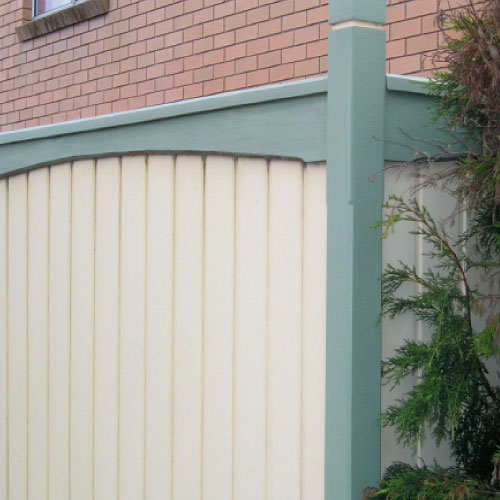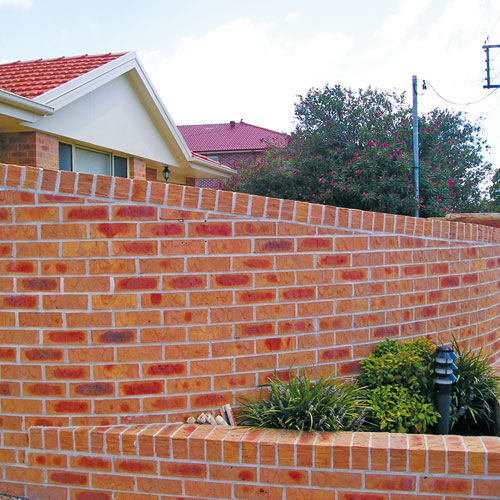Install Steel Fencing

A solid steel fence can increase security for your family, pets and property, while screening your backyard from the neighbours.
This home had an old steel fence with rotting timber rails. To improve privacy and complement the newly revamped pool area, it was replaced with a higher all-steel fence.
First, the old fence was removed and the boundary line identified, then to prepare the site, any debris or vegetation that could interfere with construction was cleared away.
Order the materials
To calculate the materials needed, divide the total fence length by the rail length and factor in the posts.
For this project, the Fielders Panel Fencing System was used, including 2670mm posts, 2370mm rails, and 1800mm Colorbond steel panels in Grey Ridge.
Each fencing section requires two posts, three fence panels and two rails.
This 25m long boundary fence consisted of just over 10 sections, requiring 22 posts, 32 panels and 22 rails, costing $956 in total.
The posts are set in position with concrete. Buy 20kg bags of premixed concrete from your local hardware store for about $7 each, or make your own by mixing gravel, sand and cement in a 4:2:1 ratio.
Maintaining the metal
To keep your steel fence looking its best, all you have to do is hose it down occasionally when you’re watering the garden or lawn.
USE a soft broom to remove any cobwebs or loose dirt and pay extra attention to the area under the top rail, which is sheltered from being washed naturally by rain.
KEEP soil away from the base rails and fence posts to avoid water retention, which leads to corrosion.
Protect the fence from any overspray when using garden products such as weedkillers and fertilisers because these can damage the surface. If this happens, wash the fence down with water.
REPLACE damaged panels but don’t use touch-up paint on any minor scratches, as it will weather differently to the original painted surface.
Meeting the regulations
Before putting up a new fence, it’s necessary to talk to your neighbours. There are also council building regulations that need to be met.
So don’t install a fence without checking a few things first.
With neighbours, both parties are usually required to share the cost of a dividing fence that is considered sufficient. This means a standard or basic fence for the area.
If one party wants more, they may have to pay the additional costs over and above the shared cost of a sufficient fence.
Check with the local building authority or council whether there are any restrictions on the fence height or type of material used.
The council can also specify the boundary to kerb distance, so be careful on corner blocks, and make sure the fencing style meets any streetscape or heritage regulations.
TIP Before building, have a surveyor mark disputed or vague boundaries.
Choose the material
A fence is exposed to the elements, so it needs to be durable. Timber and brick are common alternatives to steel fencing.
Timber
Treated pine is the most popular for traditional lap-and-cap paling fences. It is important to select the right hazard treatment level with treated pine, selecting H3 for palings and capping, with H4 the correct choice for in-ground posts.

Treated pine is the most popular for traditional lap-and-cap paling fences
Brick
The toughest of the lot, brick offers the most in security and privacy. Double brick is more substantial than single-skin brickwork, but the material and construction costs can be high. Many are rendered and painted to match the property.

The toughest of the lot, brick offers the most in security and privacy
Sinking fence posts
Fencing has to withstand winds of considerable force at various times, so it’s important to build a strong and durable fence.
The way to do this is to have posts of a suitable length set in post holes of the correct depth.
Post lengths increase in proportion to the depth of the hole, which in turn is determined by the type of substrate on your site.
ROCK requires holes to be dug 350mm deep and one bag of concrete for each post.
CLAY SOIL needs a hole depth of 600mm and two bags of concrete.
SANDY SOIL requires 900mm holes and three bags of concrete.
Install the fence













